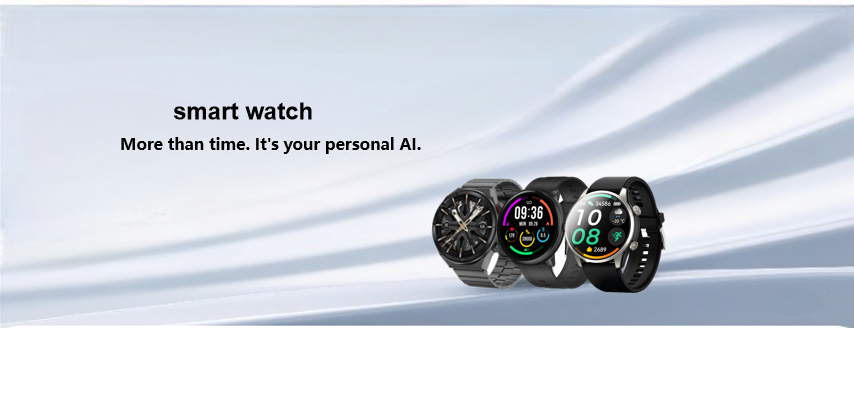The Future Market Trends of Smartwatches in the AI Technology Era
6/30/20255 min read


Introduction to Smartwatch Evolution
The evolution of smartwatches has been a remarkable journey, tracing back to the early concept of wearable technology. Initially, devices resembling watches were limited to displaying time and basic information, primarily functioning as fitness trackers. Over the past decade, however, significant strides in technology have propelled smartwatches into a new era, especially with the integration of artificial intelligence.
Initially introduced as simple pedometers and heart rate monitors, the functionalities of smartwatches began to expand rapidly in the early 2010s. The launch of devices like the Pebble smartwatch marked a pivotal point in the industry, showcasing the potential for third-party applications that could enhance user experience. Following this, giants in the tech industry, such as Apple and Samsung, entered the market, elevating the smartwatch category with advanced features and sophisticated designs. This transition laid the foundation for more complex functionalities that we anticipate today.
With advancements in sensor technology and connectivity, smartwatches now monitor a wide array of health metrics, including sleep patterns, stress levels, and even blood oxygen saturation. Furthermore, the integration of machine learning algorithms has enabled these devices to offer personalized recommendations, enhancing their role as not just an accessory, but as an essential tool for health management. User interface design has also evolved, with touchscreens and voice commands becoming standard, making navigation intuitive and encouraging broader adoption among users.
The convergence of artificial intelligence within smartwatches continues to reshape their purpose and capabilities. As AI technology matures, smartwatches are evolving into interactive platforms that can anticipate user needs, streamline daily tasks, and integrate seamlessly with other smart devices. This historical context sets the stage for understanding the current market dynamics where smartwatches are poised to continue their growth and relevance in our increasingly digital lifestyle.
The Role of AI in Smartwatch Functionality
The integration of artificial intelligence (AI) into smartwatch technology has dramatically transformed the functionalities and capabilities of these wearable devices. One of the most significant contributions of AI is its ability to provide personalized health monitoring. Smartwatches equipped with AI algorithms can analyze a user's health data in real-time, offering insights tailored to individual health patterns. This level of personalization enhances the user experience, encouraging healthier lifestyle choices through suggestion systems that may recommend workouts, dietary changes, or even alert users to potential health issues.
In addition to personalized health metrics, predictive analytics powered by AI are revolutionizing fitness and wellness tracking. AI can analyze historical data trends to anticipate future performance and health needs. For instance, based on past activity levels, a smartwatch might predict when a user is likely to reach their fitness goals or suggest a tailored exercise routine that aligns with their physical capabilities. This proactive approach not only aids users in achieving their fitness aspirations but also fosters a more engaging and interactive relationship between the individual and their smartwatch.
Voice-activated assistants represent another pivotal development driven by AI within smartwatches. Users can engage with their devices seamlessly through natural language commands, allowing for hands-free operation and enhancing the overall user convenience. Whether setting reminders, checking the weather, or controlling smart home devices, the integration of AI-generated voice recognition capabilities has made interactions more intuitive, further solidifying the smartwatch's role as an indispensable personal assistant.
Moreover, AI enhances smart notifications by ensuring that users receive relevant alerts based on their behavior and preferences. Smartwatches can filter out unnecessary notifications, delivering only those that are pertinent to the individual’s schedule and interests. This capability not only improves productivity but also promotes a more organized lifestyle.
Market Trends and Consumer Preferences
The smartwatches market is witnessing significant transformations, primarily driven by advancements in artificial intelligence (AI) technology. Recent market research indicates that the demand for smartwatches has surged, positioning them as an essential accessory among consumers. Sales data show a robust year-over-year growth rate, exceeding 15%, particularly within tech-savvy demographics such as millennials and Gen Z. These groups prioritize interconnected devices that offer functionality alongside style, showcasing a preference for features like health tracking, customizable interfaces, and AI-integrated voice assistants.
One of the pivotal factors influencing market trends is the integration of AI capabilities in smartwatches. Such features enable devices to provide personalized recommendations, offer predictive health analytics, and enhance overall user experience through streamlined interfaces. The rising awareness of health and fitness has further fueled consumer interest in smartwatches equipped with advanced monitoring capabilities. Statistics reveal that a significant percentage of users value features like heart rate monitoring and activity tracking, demonstrating a clear link between consumer health awareness and smartwatch functionality.
In terms of design, emerging fashion trends reflect a shift towards more personalized and customizable options. Consumers are increasingly drawn to stylish designs that blend seamlessly with everyday attire, showcasing individuality. This trend is reinforced by brand collaborations with fashion designers, ensuring that aesthetics do not compromise functionality. Additionally, the growth of online retail has empowered consumers to explore a diverse array of designs and brands, further driving competition in the market.
Brand loyalty plays a crucial role in shaping consumer preferences as well. Established brands, recognized for their quality and reliability, often benefit from repeat purchases, while newer entrants must work diligently to build trust and distinguish themselves. Overall, the interplay of AI integration, consumer preferences, and evolving design trends will continue to shape the future of the smartwatch market in the technology era, paving the way for innovative developments and consumer engagement.
Future Predictions and Challenges Ahead
The landscape of the smartwatch market is rapidly evolving, particularly against the backdrop of advancements in artificial intelligence (AI). As we look towards the future, several key predictions can be made regarding the trajectory of this industry. First and foremost, AI integration is expected to enhance the functionality of smartwatches significantly. Features such as advanced health monitoring, personalized recommendations, and smarter connectivity will likely become standard offerings, making smartwatches more indispensable than ever for users. We can anticipate AI-driven analytics that will provide actionable insights about the wearer's health, fitness, and overall well-being.
However, as the smartwatch market grows, challenges will undoubtedly arise. One prominent concern is privacy. With the vast amount of personal data collected by smartwatches, ensuring the security of this information is crucial. Manufacturers must take proactive measures to guarantee that user data is handled responsibly and transparently. Failing to address these privacy concerns could lead to decreased consumer trust and, ultimately, a slowdown in market growth.
Furthermore, competition within the tech industry will be a significant challenge. As more companies enter the smartwatch sector, differentiating products and capturing market share will become increasingly difficult. Established companies will need to innovate continuously to maintain their leadership positions, while new entrants could disrupt the market with novel approaches and technologies.
There is also potential for shifts in consumer behavior as AI technology becomes more integrated into daily life. Users may seek more personalized and intuitive devices that seamlessly blend into their routines. This potential shift will require manufacturers to remain agile and responsive to emerging trends and preferences. Overall, the future of the smartwatch market is poised for growth, but it will necessitate careful navigation of emerging challenges and a commitment to innovation to harness the full capabilities of AI technology.
